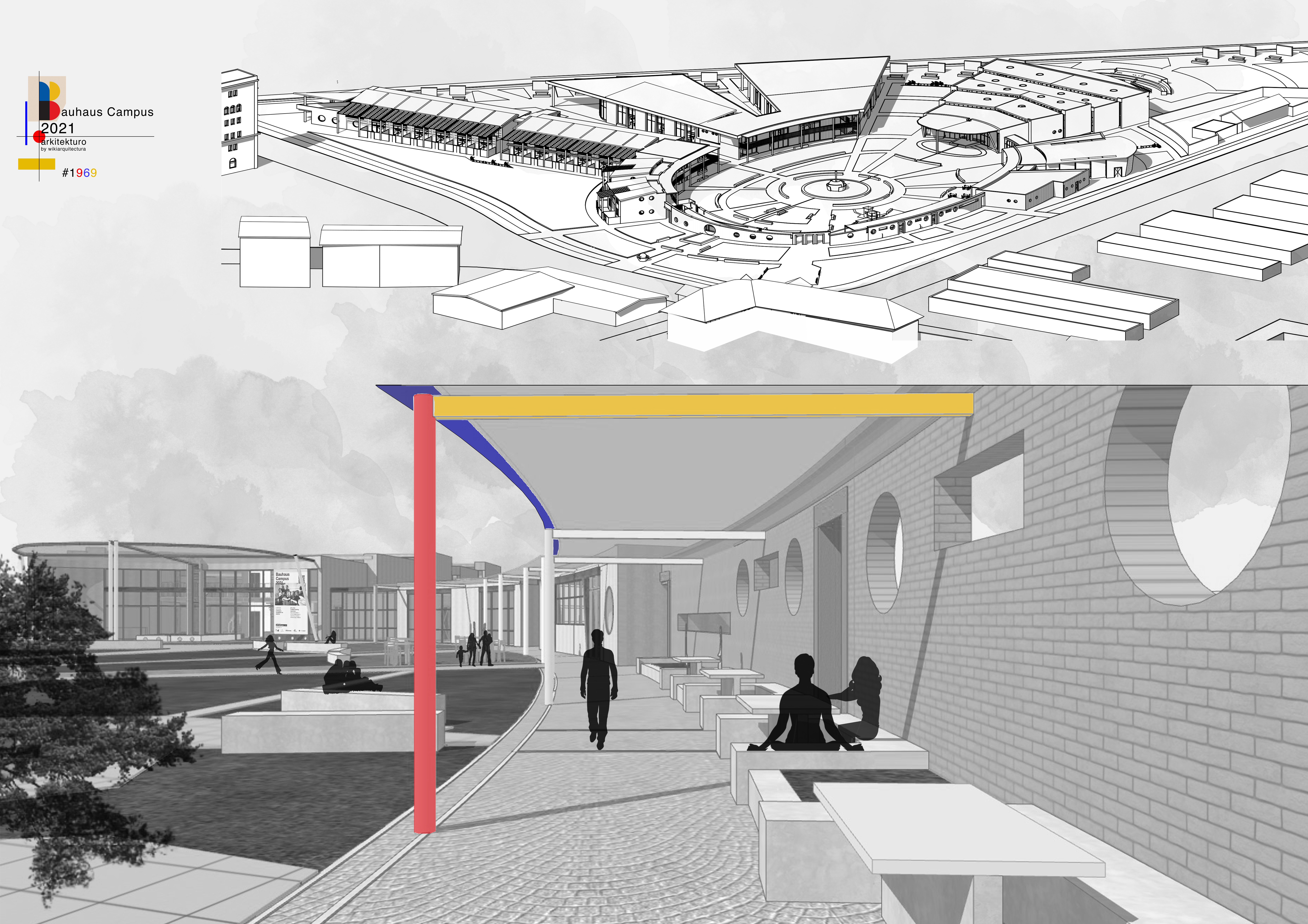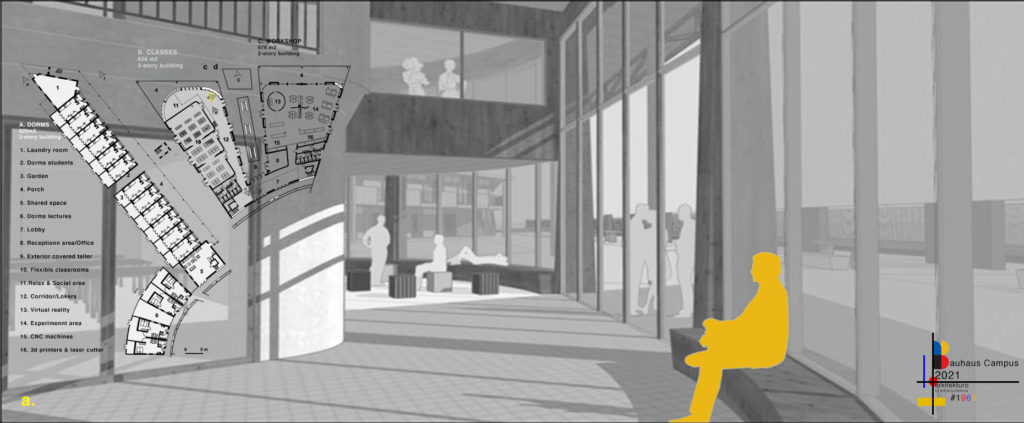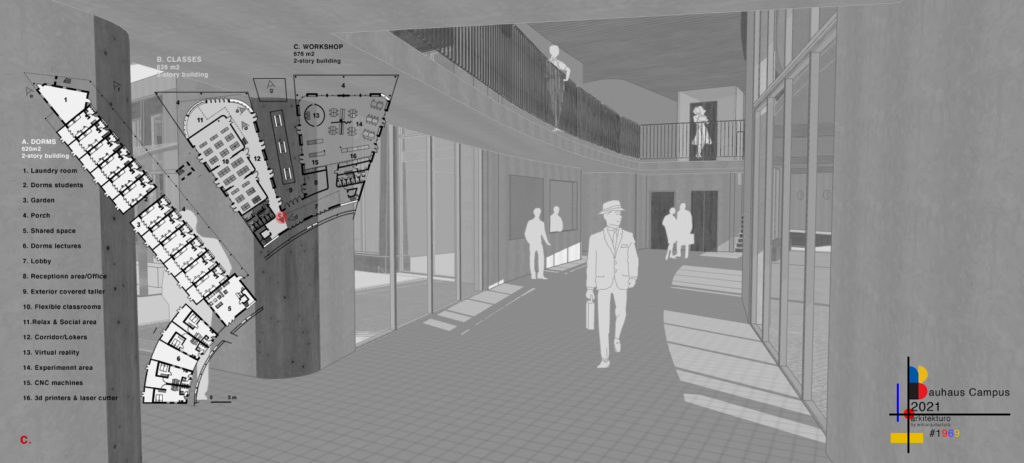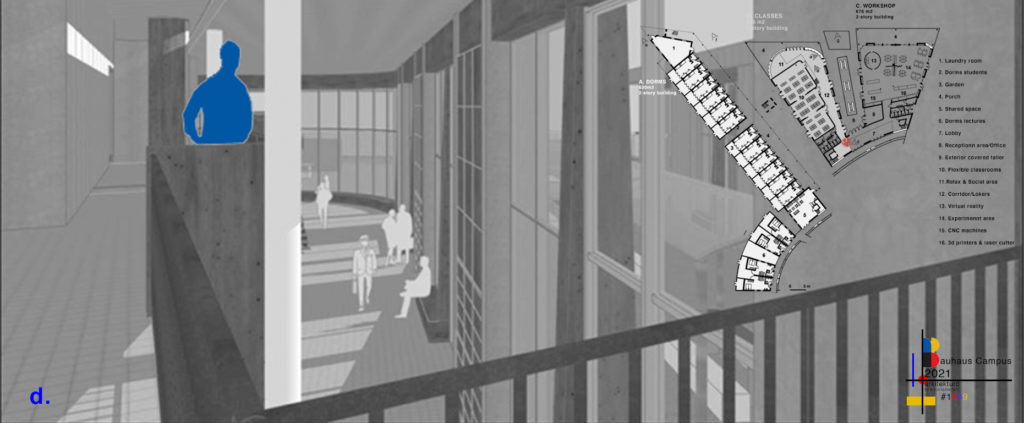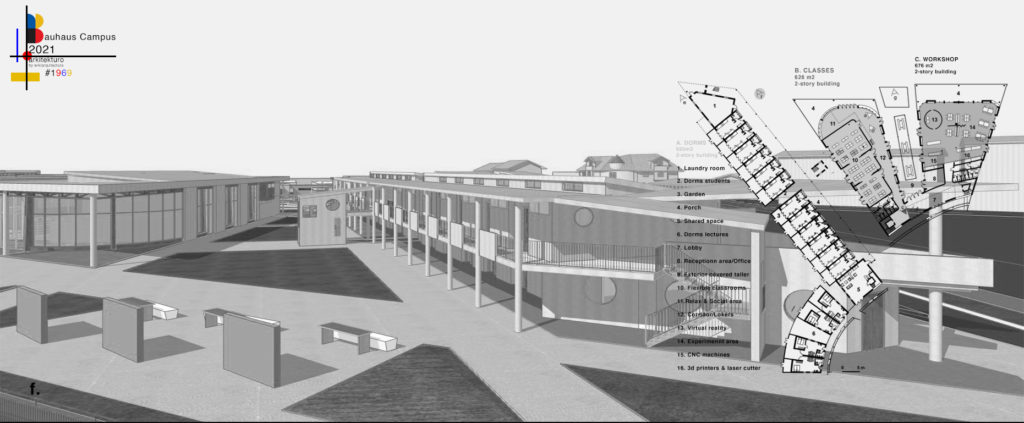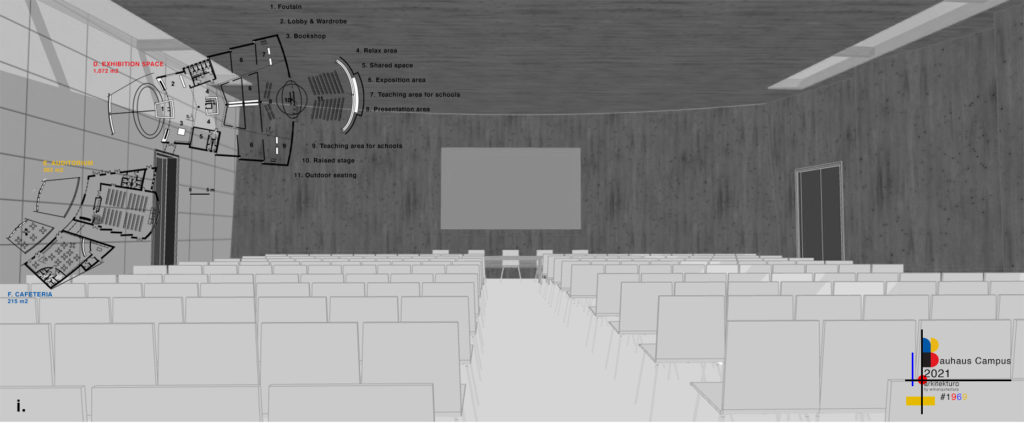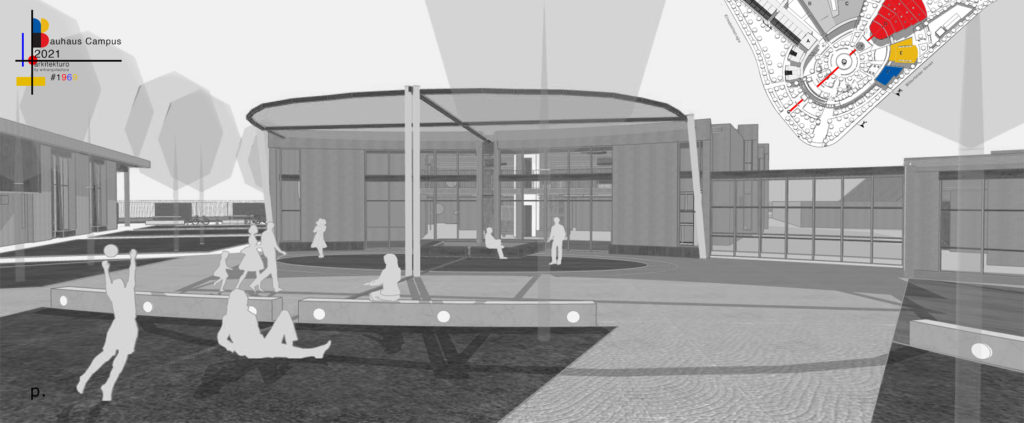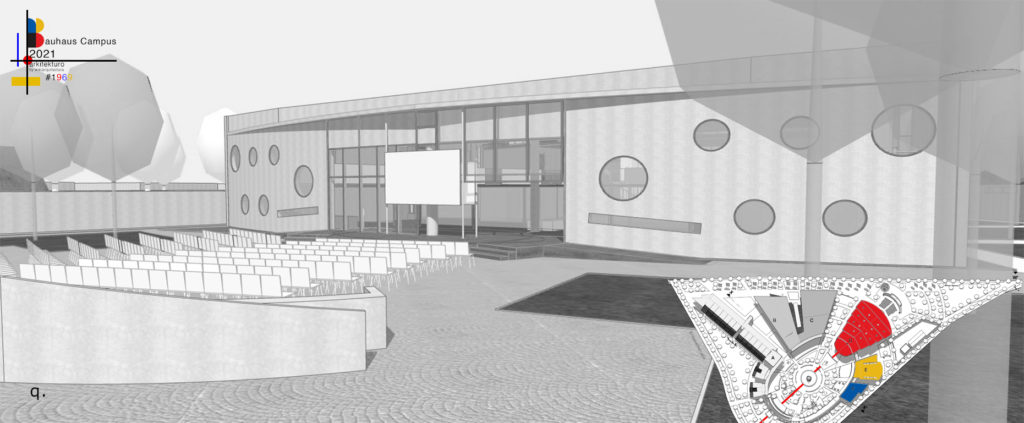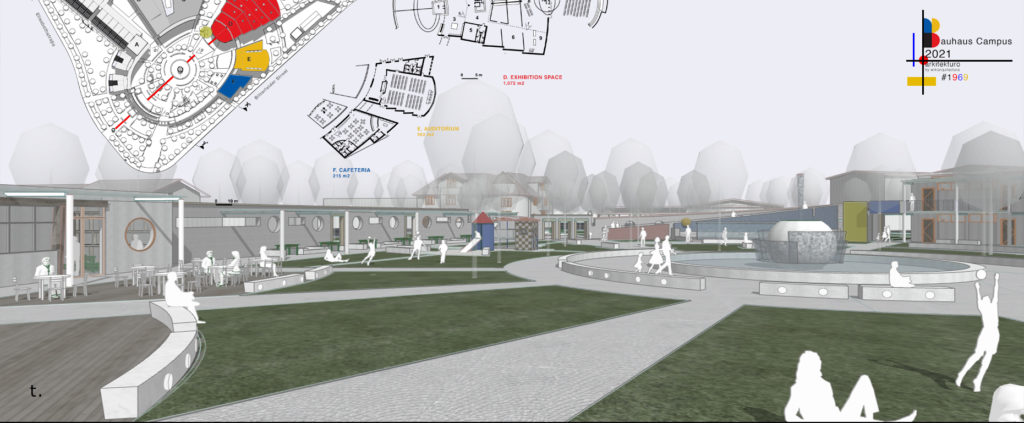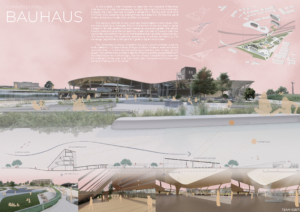The Bauhaus 2021 Campus is designed as a meeting place open to the territory in which to build a sense of community and sharing with a free Wi-Fi area.
The planimetric articulation follows the geometry of the lot bounded by Bitterfelder Street, Elisabethstraβe and the train tracks.
The project develops around the elliptical square with sinuous, enveloping and soft lines, on which the main entrances of the buildings face north-west and south-east, the wall equipped with fixed seats and tables (o) and the vertical fountain (l) that act as a separation to urban traffic.
The water is a characteristic element of the agora and refers to the rivers that touch the city, the Elbe and the Mulde. The flow of water flows into the floor longitudinally connecting the circular fountain (t) with the body of water placed at the entrance of the exhibition space (s). The stream of water continues by dipping into the vertical fountain and ends in the fountain located outside of the boundary dictated by the wall Elisabethstraβe Street.
The vertical artistic fountain serves as a parapet to the ramp that leads to the first floor of dorms, classes and laboratories (l) connected by a balcony.
In the tree-lined square are housed micro environments for children’s play and relaxation (or) and areas pertaining to buildings, defined with different flooring and specific furniture, in front of the residences of 620 square meters for two floors, the classes of 626 square meters and the laboratories of 676 square meters for two floors, the cafeteria of 215 square meters, the auditorium of 355 square meters and the exhibition space of 1,172 square meters (u, m).
The side walls of the buildings, create the fifths of walls oriented towards the agora and generate internal courtyards open to the city (e, f, g).
The courtyards surrounded by greenery are the extension of the indoor areas where you can work or play outdoors (q).
The mobility of the area is reorganized with bike paths and pedestrian paths with trees and equipped with chairs decorated with artistic majolica and racks for bicycles.
In tangence with the railway an artistic path has been created where to exercise the creativity with installations and walls for the streat art (f).
The different entrance of the light, zenith and level, the double-height environments (c, d), are conceived as spaces for relationships and the color of the furniture, the large windows open to nature, the presence of more materials (natural and colored wood, resin, plaster and fabrics) contribute to making spaces lively and not monotonous and to underlining their socializing role.
The geometry of the volumes and their orientation, the ceilings with variable height and the windows placed in the roof, allow ventilation and natural air exchange. The energy contribution is guaranteed by the solar thermal cover and the materials chosen are of natural origin.
The buildings take advantage of the advantages of modularity and dry assembly, such as the placement of lockers for students inside the niches walls placed in the school corridor, the load-bearing structures and wood finishes designed for disassembly and recycling.


